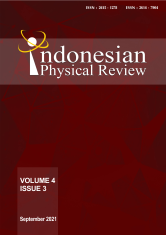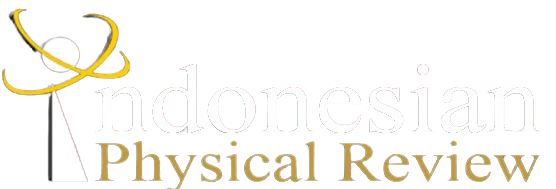IDENTIFICATION OF HORST AND GRABEN STRUCTURAL PATTERNS USING GRAVITY AND SECOND VERTICAL DERIVATIVE (SVD) METHODS IN THE LUBUKSIKAPING AREA OF WEST SUMATERA
DOI:
10.29303/ipr.v4i3.118Downloads
Abstract
The Lubuksikaping area is located between the main fault branching of the Sumateran Fault so it can be seen that there are many quite complex structures. This research was conducted to determine the structure pattern of the high (horst) and low (graben) that formed in the sub-surface of the Lubuksikaping area, West Sumatera. This research uses gravity data which will then be carried out by spectral analysis, upward continuation, separation of regional and residual anomalies, and Second Vertical Derivative (SVD) analysis. Furthermore, 2D forward modeling is carried out to determine the correlation between the 2D subsurface forward modeling and the resulting SVD graph. Based on the analysis of the regional anomaly map, it can be seen that the measured low anomaly is due to the area in the form of a structural valley formed due to the activity of the Sumatera Fault, while the high is thought to be a structural hill (horst) that forms an elongated mountain range and separated by graben. In addition, based on the analysis of the residual anomaly map, it can be seen that the low anomaly indicates the presence of a depositor (graben), whereas, the high anomaly is indicated as the presence of rocks with high-density contrast values. and is interpreted as a horst structure. Based on the analysis of the horst and graben patterns in the residual Bouguer anomaly, it can be seen that there is an elevation zone (horst) that are northwest and northeast on the residual map and it is known that there are 3 graben structures in Lubuksikaping, namely Panyabungan Graben, Rao Graben and Sumpur Graben with relative northwest-southeast direction. The 2D models of paths A-A' and B-B' show faults that are located relatively the same as the SVD graph obtained from the residual SVD anomaly map.
Keywords:
Gravity Method SVD Structural Patterns LubuksikapingReferences
Apriani M., Julius A.M., Joseph M., Heryanto D.T., & Marsono A. (2017). Estimation of Sediment Thickness with Power Spectral Analysis on Gravity Anomaly Data in DKI Jakarta. Jakarta: BMKG Earthquake and Tsunami Center.
Elkins T.A. (1951). The Second Derivative Method of Gravity Interpretation. Geophysics v.23, pp.97-127.
Handayani L. & Wardhana D.D. (2017). Gravity Exploration for Groundwater and Bedrock Topography in Serang, Banten. Geological and Mining Research, 27(2), pp.157–167.
Murti M.D. & Nurhasan. (2016). Two-Dimensional Modeling of Gravity Data in the Lembang Fault Zone. SKF 2016 Proceedings. Bandung, pp.305–314.
Rock N.M.S., Aldiss D.T., Aspden J.A., Clarke M.C.G., Djunuddin A., Kartawa W., Miswar, Thomson S.J., & Whandoyo R. (1983). Geology Map of Lubuksikaping scale 1: 250,000, Sumatera. Geology Research Center.
Setiadi I., Setyanta, & Widijono B.S. (2010). South Sumatera Sediment Basin Delineation Based on Gravity Data Analysis. Journal of Geological Resources, Vol. 20, No. 2, Pages: 93-106.
Telford W.M., Geldart L.P., Sheriff R.E., & Keys D.A. (1976). Applied Geophysics. Second Edition. Cambridge University Press. Cambridge.
License
Authors who publish with Indonesian Physical Review Journal, agree to the following terms:
- Authors retain copyright and grant the journal right of first publication with the work simultaneously licensed under a Creative Commons Attribution-ShareAlike 4.0 International Licence (CC BY SA-4.0). This license allows authors to use all articles, data sets, graphics, and appendices in data mining applications, search engines, web sites, blogs, and other platforms by providing an appropriate reference. The journal allows the author(s) to hold the copyright without restrictions and will retain publishing rights without restrictions.
- Authors are able to enter into separate, additional contractual arrangements for the non-exclusive distribution of the journal's published version of the work (e.g., post it to an institutional repository or publish it in a book), with an acknowledgment of its initial publication in Indonesian Physical Review Journal.
- Authors are permitted and encouraged to post their work online (e.g., in institutional repositories or on their website) prior to and during the submission process, as it can lead to productive exchanges, as well as earlier and greater citation of published work (See The Effect of Open Access).





